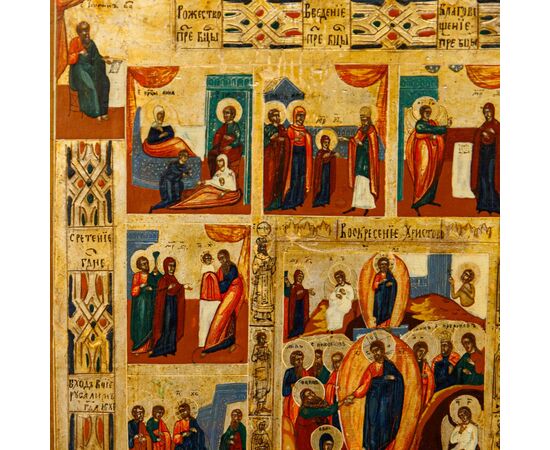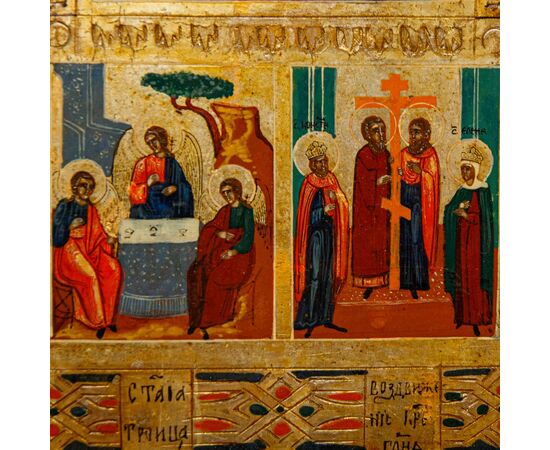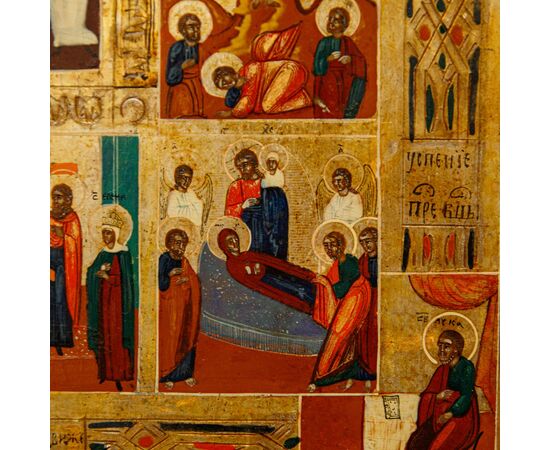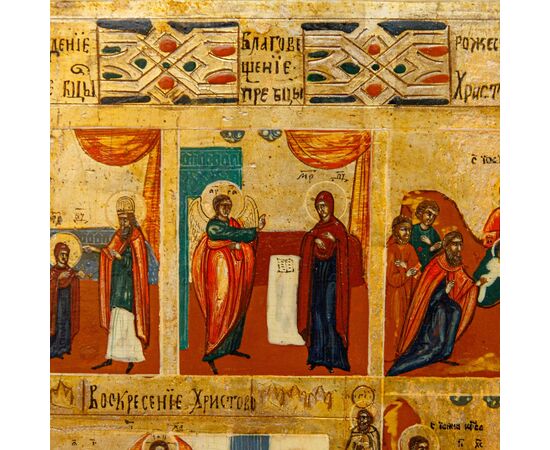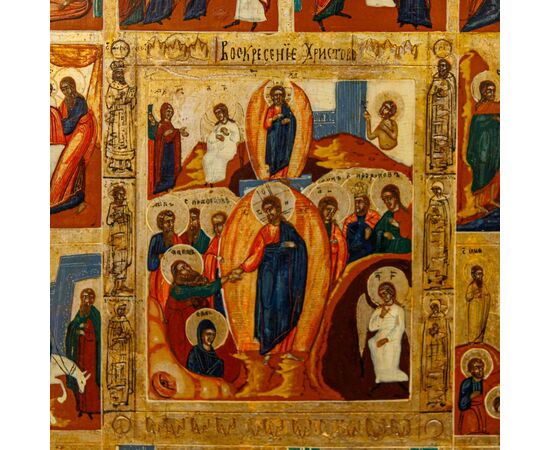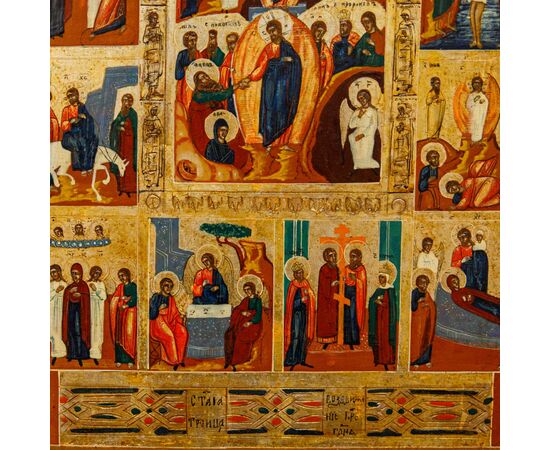Russia, 19th century, Icon depicting the Twelve Great Feasts
Russia, 19th century Icon depicting the Twelve Great Feasts Egg tempera and mixed media on gold leaf applied to panel, 38 x 31 cm The icon, from the Greek eikon, image, presents the narration of episodes from the life of the Virgin and Jesus, constituting a treatise of theology in colors. The icon under analysis, called the "Icon of the Twelve Great Feasts," includes in separate squares the traditional representation of all the most important feasts in the liturgical calendar of the Orthodox Church. Icons depicting the twelve feasts maintain a fixed number but may undergo some iconographic variations. In the icon analyzed, twelve episodes are arranged around a larger scene in the center of the panel. The central episode refers to the Resurrection of Christ and his Descent into Hell. The depiction is divided into two overlapping scenes; above is Christ, enclosed in a mandorla of light, a symbol of his divine nature, hidden by his human nature, rising from the tomb. The mandorla surrounding the figure of Christ indicates the Glory radiating from the divine person who is the Incarnate Word. Below, Christ, again in a mandorla of light, is depicted in Limbo, among the patriarchs of the Old Testament, intent on freeing and bringing the souls of the blessed into heaven. Following the Byzantine tradition, around the main panel are the twelve episodes related to the Despotic feasts, in memory of events in the life of Christ, and the Theomirotic feasts, relating to the Mother of God. In the icon in question, we find represented: The Nativity of the Virgin (September 8), the Presentation of the Mother of God in the Temple (November 21), the Annunciation (March 25), the Nativity of Christ (December 25), the Presentation of Christ in the Temple (February 2), the Baptism of Christ (January 6), the Entrance into Jerusalem (Palm Sunday), the Transfiguration (August 6), the Ascension, the Holy Trinity of the Old Testament, the Exaltation of the Cross (September 14) and the Dormition of the Mother of God (August 15). The icon of the Twelve Great Feasts, due to its iconography, is an example of permanent liturgical-biblical catechesis and in Eastern Rite churches is an essential element of the iconostasis, that is, the dividing wall that separates the nave, decorated with icons.



